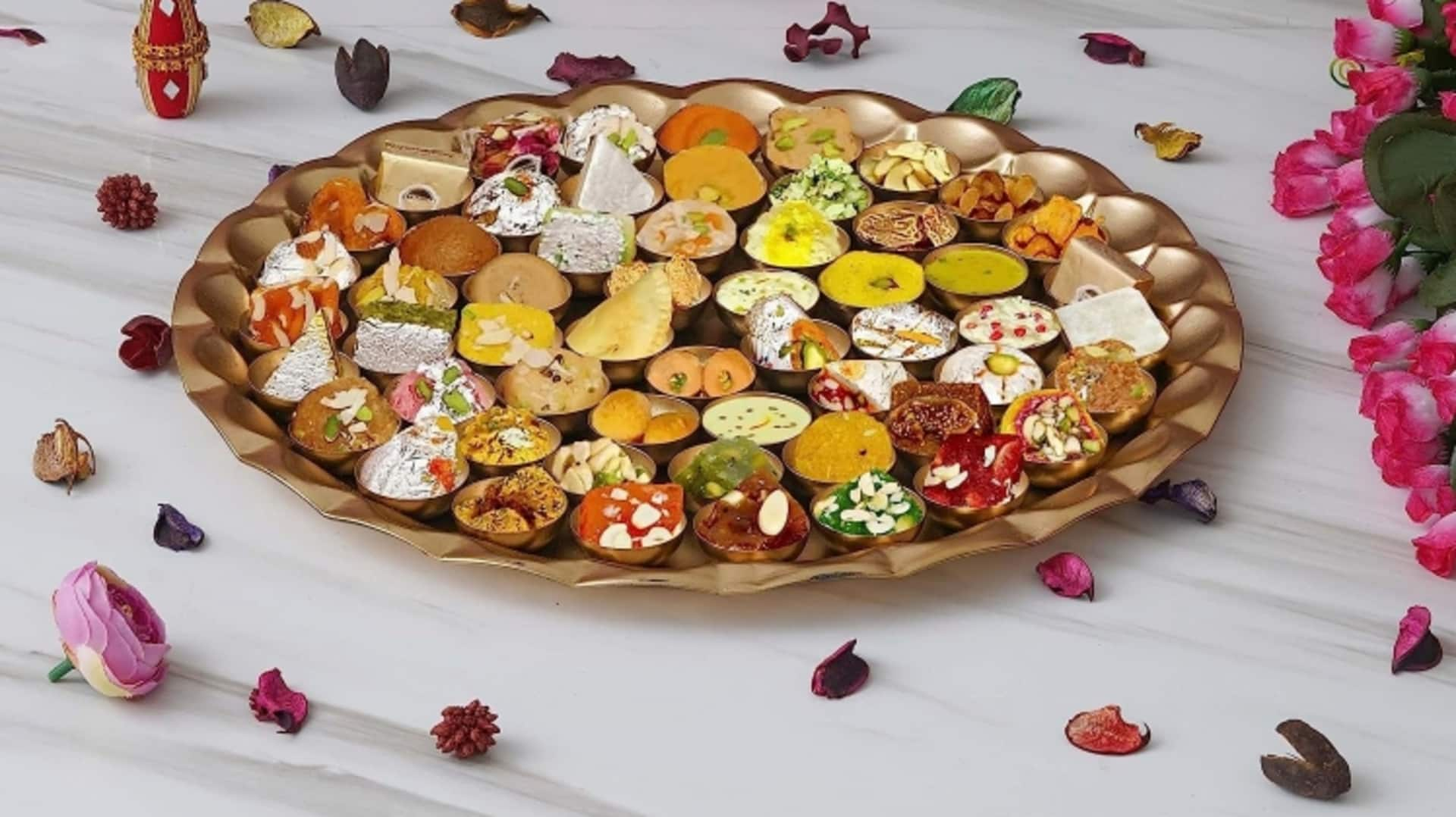
Janmashtami: 5 traditional prasad recipes for Lord Krishna's bhog
What's the story
As per Hindu traditions, offering food to deities is common, particularly for Lord Krishna, known for his love of certain dishes. Preparing prasad for Lord Krishna involves making dishes believed to be his favorites, highlighting the cultural and religious significance of these offerings. Here, let's explore five traditional recipes often prepared as part of Lord Krishna's bhog for Janmashtami.
Essence
Makhan Mishri: A divine delight
Makhan Mishri is a simple yet beloved offering made from churned white butter and crystallized sugar lumps known as mishri. According to legends, young Krishna was fond of stealing butter; hence, this dish symbolizes his playful nature. To prepare it, one needs only two ingredients: unsalted white butter and mishri. The butter is whipped until smooth and then mixed with crushed mishri pieces.
Concoction
Panchamrit: The nectar of gods
Panchamrit, a divine concoction per Hindu beliefs, blends five sacred ingredients: milk, yogurt, honey, sugar, and ghee. This recipe specifically requires two tablespoons of both milk and yogurt, and one tablespoon each of honey and ghee, with a teaspoon of sugar. Once mixed until the sugar dissolves completely, the Panchamrit is offered to deities and then distributed to devotees.
Nutrition
Dhaniya Panjiri: A nutritious offering
Dhaniya Panjiri uses coriander powder, powdered sugar or jaggery, and dry fruits like almonds and cashews. You need 100 grams of coriander powder, 50 grams each of powdered sugar or jaggery, some ghee, and finely chopped mixed dry fruits. First, roast the coriander powder in ghee until it is fragrant. Then add the remaining ingredients and mix well before serving.
Indulgence
Kheer: A sweet savor
Kheer, or rice pudding, is a sweet dish made by simmering rice in milk until it softens completely. Then it is sweetened with sugar or jaggery according to taste preference. To enhance its flavor, spices like cardamom or saffron strands can be added. Nuts such as almonds or pistachios provide texture contrast. The dish can be served chilled or warm, depending on the season.
Tradition
Tulsi Vivah special: Sabudana Khichdi
Sabudana Khichdi, essential for Tulsi Vivah, blends sago pearls with peanuts, cumin seeds, green chilies, salt, lemon juice, and fresh coriander leaves. You need to soak and then cook the sago pearls to puff them up. It makes for an aromatic and flavorful dish and serves as a satisfying prasad during fasting days and religious festivities dedicated to Lord Krishna.